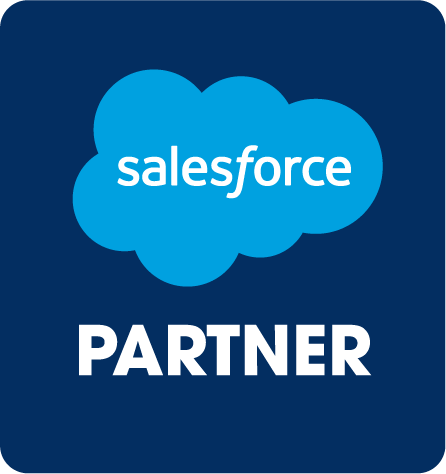
In 2018, we were part of the largest-scale Salesforce implementation in Europe. This required buy-in and involvement from many different areas of the business to ensure we stayed productive. Here, we outline how you can do the same.
The digital landscape has changed a lot over the last five years. Companies are revolutionizing the way they operate, forever transforming the way they interact with their customers.
Customer-relationship management (CRM) software is now an indispensable tool for any customer-focused business hoping to compete in the digital world. Customers have come to expect an immediacy and efficiency that more traditional systems simple can’t provide; fail to keep up with the latest CRM tech, and you risk losing business to your rivals.
Salesforce is the leading CRM software provider in the world, offering a level of functionality and ease of use that you’d be hard-pressed to find elsewhere. As a platform, its customizability and scalability empower businesses to transform and streamline the way they work. But like any other CRM, implementing Salesforce presents the kind of challenges you’d expect when migrating to a cloud service from a legacy system.
Data migration is a major cause of disruption to business as usual, with phased implementation often impacting several areas of your operations at any given time. Completely avoiding disruption to your day-to-day business is impossible with such a massive undertaking, but there certainly are ways to pre-empt pain points, minimize the impact of that disruption, and keep productivity levels up during your Salesforce roll out.
If you’re more of an auditory learner, why not check out the presentation at Dreamforce 2018 from Frank Recruitment Group CIO Mark Hill, where he explored how to implement Lightning at warp speed.
1. Planning is paramount
It’s never too early to start thinking about your Salesforce implementation, or to build a robust change management plan. Having a strong plan on hand will enable not only key decision makers, but the whole company to get a clearer picture of where you are, where you’re going, and what needs to be done to get there. That, in turn, makes it easier for employees to plan their time and prioritize tasks and projects to minimize interference during the Salesforce implementation cycle.
Plan as best you can for any hypothetical implementation hiccups that could arise, factor them into your timeline, and make contingency plans accordingly.
2. Appoint an interim lead
Brand the transformation—give the project an evocative name—and appoint an interim lead to be your ‘Executive Sponsor’.
The Executive Sponsor, along with in-house trainers, should be on hand to help champion the change, and keep everyone involved and incentivized as the implementation project shifts from one phase to the next.
Having a clear point of contact responsible for leading the project is crucial. This ensures tasks and responsibilities are assigned clearly and to the appropriate teams, and that nobody is left twiddling their thumbs or unsure of their role in the lead up to, during, or after implementation.
3. Crystal-clear communication


Managing expectations and ensuring everyone in the organization is up to date on the implementation is essential to its success, and to keeping day-to-day business moving as smoothly as possible. The key to doing this effectively is to create and schedule regular communications to every member of the company; this will allow them to work around any disruption and organize their time around major implementation milestones.
4. Make sure everyone’s on board
CRM implementation is not just about buying new tech or taking on another IT project; it’s real business transformation and will have a huge and far-reaching effect on the way you work, and the way customers perceive your organization. That means you’ll need buy-in from everyone; failure to approach your implementation with the right mindset and encourage user adoption will leave you with little more than a very expensive spreadsheet.
Everyone from your most junior hire right up to C-suite is a stakeholder when it comes to a project of this scale; they need to get on board with your vision in order for it to be a success. Without that commitment from all relevant departments across your business, your expensive new CRM will only sit and gather dust.
At the end of the day, Salesforce is being implemented to streamline their professional lives, so remember to highlight the inherent value of the solution for specific roles and departments. Demonstrating how this software will make their jobs easier will help win their enthusiasm and support during the implementation and once the system goes live.
5. Choose the right partner
Any Salesforce consultant worth their salt will have the experience necessary to anticipate the kinds of problems you could encounter throughout the implementation cycle. Having the right implementation partner will not only get your team on track for long-term success, but will make sure that relevant departments remain as productive as possible until normal service resumes.
Take the time to choose a seasoned partner that can guide you from the first steps of your Salesforce journey, through to implementation and beyond if necessary. Always be clear about deadlines and, when drawing up contracts, include clauses that will incentivize or penalize the partner according to their ability to keep to those deadlines.
That being said, it’s important to build a team that you enjoy working with. Rolling out new software across a business is no small feat, no matter the size of the company in question; you’ll be spending a lot of time working side by side with your Salesforce partner, so take culture fit into consideration when you’re making a decision.
6. Know the difference between speed and haste
There’s a subtle difference between hasty work and working at speed. The former happens when you go in without a solid plan and will negatively impact productivity levels and morale; the latter happens when you’ve got the right team, plan, and approach to get the job done effectively.
Accept that some things will go wrong, and that there will be certain aspects that need to be re-worked—but ultimately, if you plan currently, you’ll go further than you imagined, faster than you hoped, without skipping a beat in terms of the quality of work you output. The company culture you help foster and can-do attitude that comes with it will set the pace for the entire project.
Read our guide to the Salesforce development lifecycle and which stages should be your concern as an HR professional.

